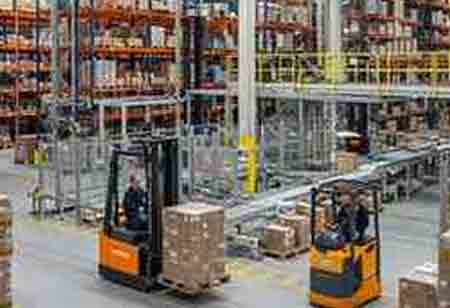THANK YOU FOR SUBSCRIBING
THANK YOU FOR SUBSCRIBING

By
Logistics Transportation Review | Friday, April 25, 2025
Stay ahead of the industry with exclusive feature stories on the top companies, expert insights and the latest news delivered straight to your inbox. Subscribe today.
Material handling is crucial for efficient logistics, focusing on safely moving and managing materials through production and distribution.
Fremont, CA: Material handling is essential to any logistics or industrial operation. It includes moving, safeguarding, storing, and managing materials during production, distribution, warehousing, and disposal. Every product goes through several handling steps, from raw materials on the factory floor to completed goods prepared for delivery. In addition to increasing output, effective material handling lowers operating expenses and guarantees worker safety. Effective material handling is becoming increasingly crucial as companies strive for leaner operations and faster turnaround times.
Simplifying Procedures to Increase Output
Streamlining operations is one of the main goals of material handling. Delays and disruptions are reduced when items are transported easily and effectively through the workflow. Inadequate handling system management can result in time wastage, product damage, and bottlenecks. Conversely, well-designed systems minimize needless handling and movement, which speeds up order fulfillment and production.
Improving material flow requires establishing transparent processes and selecting the appropriate machinery, such as automated guided vehicles, forklifts, or conveyors. Automation is becoming increasingly significant in many facilities, enabling businesses to transport goods more precisely and quickly while lowering the amount of manual labor required.
Putting Safety and Ergonomics First
Workplace safety and material handling are strongly related. Injuries and downtime may arise from improper lifting techniques, repetitive motions, or inadequately maintained equipment. Both the kind of material and the individuals handling it are considered a safe material handling system. This entails using equipment and tools that lessen physical strain and avoid mishaps. Training employees on safe lifting practices, load limitations, and equipment usage is also crucial. To reduce worker strain, ergonomic design is also being included in handling procedures more and more. Businesses that prioritize ergonomics and safety safeguard their employees and continue to run smoothly without being interrupted by absences due to injuries.
Getting Used to Innovation and Technology
Technological innovation is shaping the future of material handling. Smart sensors, robots, and automated systems are revolutionizing the tracking and movement of materials. These technologies better use warehouse space, decrease human error, and make real-time inventory control possible. Modern material handling technologies give businesses a competitive edge by improving speed and dependability. They also gain from more operational visibility, which facilitates improved planning and decision-making. By keeping up with evolving technologies, businesses may efficiently scale and adapt to shifting market demands.
Moving items is only one aspect of material handling; another is developing a seamless, secure, and effective workflow that supports the whole supply chain. In today's fast-paced industrial world, companies can enhance performance and sustain a strong competitive position by adopting innovation, prioritizing safety, and simplifying operations.
I agree We use cookies on this website to enhance your user experience. By clicking any link on this page you are giving your consent for us to set cookies. More info





